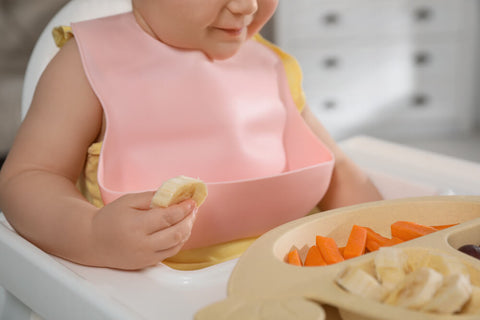Solid Advice: 6 Essential Tips for Introducing Solids to Your Baby

Embarking on the journey of introducing solids to your baby marks a significant milestone in their development. As a new parent, it's natural to have questions and uncertainties about this transition. Fear not! We're here to provide you with six invaluable tips to navigate this exciting phase with confidence and ease.
Signs Your Baby Is Ready:
Wondering when to make the leap from milk to solids? Look out for cues from your baby's development. Typically, around 5-6 months, you'll notice signs such as improved neck and head control, along with a keen interest in food. Remember, every baby is unique, but it's generally recommended not to start solids before 4 months of age.
Balancing Solids with Milk:
While introducing solids introduces your little one to new tastes and textures, breast milk or formula remains crucial for their nutritional needs until at least 12 months. Each baby adapts differently to this combination, so don't hesitate to experiment to find what works best for both of you.
Handy Products for the Journey:
Get ready for some messy yet adorable feeding sessions! Cherub Baby offers a range of products designed to simplify this messy milestone. Explore options like our Baby Fresh Food Feeder or Reusable Freeze and Squeeze Ice Pop Pouches to make introducing solids a healthy and enjoyable experience for you and your baby.
Establishing Feeding Routines:
Creating a relaxed environment during mealtimes is key. Start introducing solids after a milk feed when your baby is calm and content. Family meal times can serve as a wonderful opportunity for your baby to explore new tastes while soaking in the comforting atmosphere.
Navigating Mealtime Routines:
Embrace a calm ambiance during meals by minimizing distractions like loud music or TV. Utilize a secure high chair to ensure your baby's safety. Remember, it's normal for your baby to have good and bad days with eating initially. Start with cereals and purees, gradually progressing to various textures and flavors.
Foods to Avoid:
As you embark on this culinary journey, be mindful of foods that are unsuitable for your baby's delicate digestive system. Steer clear of salt, sugar, and strong flavors, along with potential choking hazards like nuts and whole grapes. Additionally, avoid honey and raw egg products until your baby is at least 12 months old to prevent adverse reactions.
In Conclusion:
Transitioning your baby to solids may seem daunting at first, but it's a rewarding journey filled with moments of joy and discovery. Embrace the process, stay patient, and remember, you're not alone on this adventure!
For more insights on introducing solids, explore our Fresh Food Feeder and discover how simple it can be to introduce new flavors to your little one's palate. Have questions or comments? We're here to help! Share your thoughts below 🙂
Stay tuned for more helpful tips and guides on your parenting journey!











